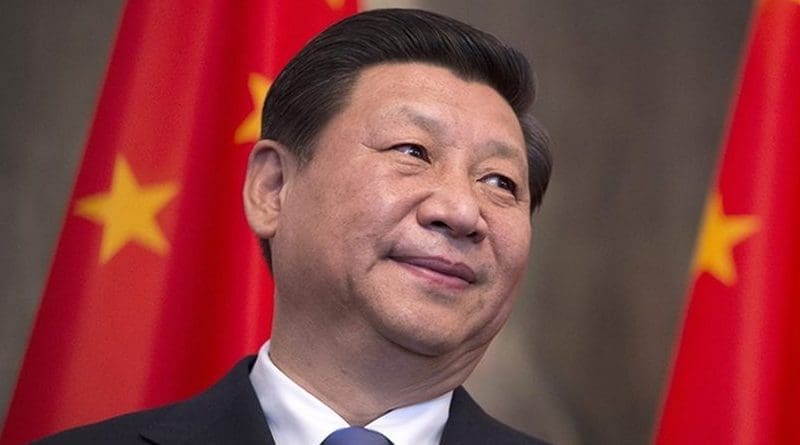No Vaccine For The Challenges Coughing Up For China – Analysis
By Kerry Brown*
2022 was dominated by three issues for China. The first was the ongoing struggle against the COVID-19 pandemic. The second was the build up to and outcome of the 20th Chinese Communist Party Congress held in October. The third was the impact of the Russian invasion of Ukraine in late February. All three threw up unexpected challenges, with sustained impacts throughout 2022 and beyond.
With regards to COVID-19, China’s year was one of unexpected change. In the early months of 2022, draconian lockdowns saw citizens enduring near household imprisonment as local authorities strove for zero transmissions. While the rest of the world relaxed their public health measures and moved towards a more tolerant approach, largely through the use of vaccines and public health campaigns, China’s strategy was different.
Shanghai, perhaps the most dynamic and open of Chinese urban areas, saw empty streets and silent public spaces over March and April. The local government, reportedly at the behest of Beijing, demanded that people stay at home and placed heavy restrictions on the delivery of food and other necessities. Shanghai residents expressed their anger with sporadic protests.
Cities from Zhengzhou to Beijing experienced similar measures. Perhaps the harshest measures were imposed on Urumqi in Xinjiang, which endured over 100 days of restrictions. The tragic deaths of 10 people trapped in a block of burning flats because exits were locked to prevent quarantined people from leaving drew widespread protests in Beijing, Shanghai and elsewhere.
While the protests were no recurrence of the 1989 Tiananmen Square protests, they clearly made China’s central leadership listen. Despite strong statements that zero-COVID remained the aim, by December 2022 most measures were lifted. While China was expected to experience a spike in COVID-19 cases upon lifting restrictions, the question was how severe. This will be a key theme of 2023.
The economic impact of the pandemic has taken a heavy toll on China’s economy. Economic growth fell and largely disappeared in 2022. That made the 20th Party Congress, held in October, a nervous affair.
Despite strenuous control and scripting and the predicted confirmation of Xi Jinping to a third term as Party Secretary, there were a few surprises. One surprise was the dramatic exit of previous Party leader and Chinese president Hu Jintao. The Party is so infamously opaque that even the most minimal insight into its internal workings is significance. Much speculation flowed from Hu’s uncomfortable departure, ranging from rumours that he suffers from dementia to anger at the choice of new leaders for the Politburo, including the removal of his protege, Li Keqiang.
Even if Hu was protesting, his ability to influence events was clearly long gone. On 24 October 2022, China’s new leadership emerged — Xi at the head of a group of seven with four new entrants, all loyal and closely linked to him and without particularly outstanding economic credentials. But about their loyalty to his nationalistic and populist mission, there are no questions.
The second in the hierarchy, Li Qiang, was the most surprising appointment. Despite being Party secretary of Shanghai during the unpopular COVID-19 lockdowns and having no other significant leadership experience, Li is most likely to be appointed China’s new premier at the National People’s Congress in 2023. He will have a formidable list of problems to face when he assumes office — low economic growth, rising unemployment, a sluggish property market and challenges to China’s export markets and manufacturing.
Geopolitically, 2022 was dominated by continuing tough relations with the United States. Relations marginally improved when Xi Jinping finally met with US President Joe Biden at the G20 Summit in Indonesia in November. This was despite China being hit by strong export controls from the United States throughout the year, particularly in key areas like semiconductors where China remains vulnerable.
The real geopolitical challenge for China was the brutal invasion of Ukraine by Russia in late February. Russian President Vladimir Putin had attended the Beijing Winter Olympics earlier that month and allegedly did not give a clear sign to the Chinese government of his intentions during his visit.
The ongoing contortions that China needed to perform to remain faithful to its neighbouring ally illustrated how tough the world stage was becoming for China. China is no ally of the West or the North Atlantic Treaty Organization, but nor was Beijing keen on the economic and geopolitical instability that Russia created globally, including the impacts on China in terms of rising energy costs and shrinking Western markets.
Above all, China saw how incompetent and ill-prepared the Russian military was. This may have made it rethink its approach to Taiwan and any for an invasion — even though the visit of former US House of Representatives Speaker Nancy Pelosi in August angered China enough for it impose a brief partial blockade on the island a few days after her departure.
2023 offers plenty of potential challenges for China. Xi Jinping may well be completely secure in his position and will not have another Party congress to face until 2027. But the Ukraine crisis, the impact of COVID-19 and tensions with the United States will continues.
*About the author: Kerry Brown is Professor of Chinese Studies and Director of the Lau China Institute, King’s College London, and Associate Fellow with the Asia Pacific Programme at Chatham House.
Source: This article was published by East Asia Forum


“While China was expected to experience a spike in COVID-19 cases upon lifting restrictions, the question was how severe”.
The answer is, not very. One month after lifting restrictions, China had 5,503 new deaths caused by respiratory failure directly due to Covid and 54,435 caused by underlying diseases combined with Covid. 15,000 Americans died of Covid in that interval.
90% of China’s fatalities were over 65 years, their average age at death was 80, and most suffered from underlying conditions. Average life expectancy in China is 78.6 years.